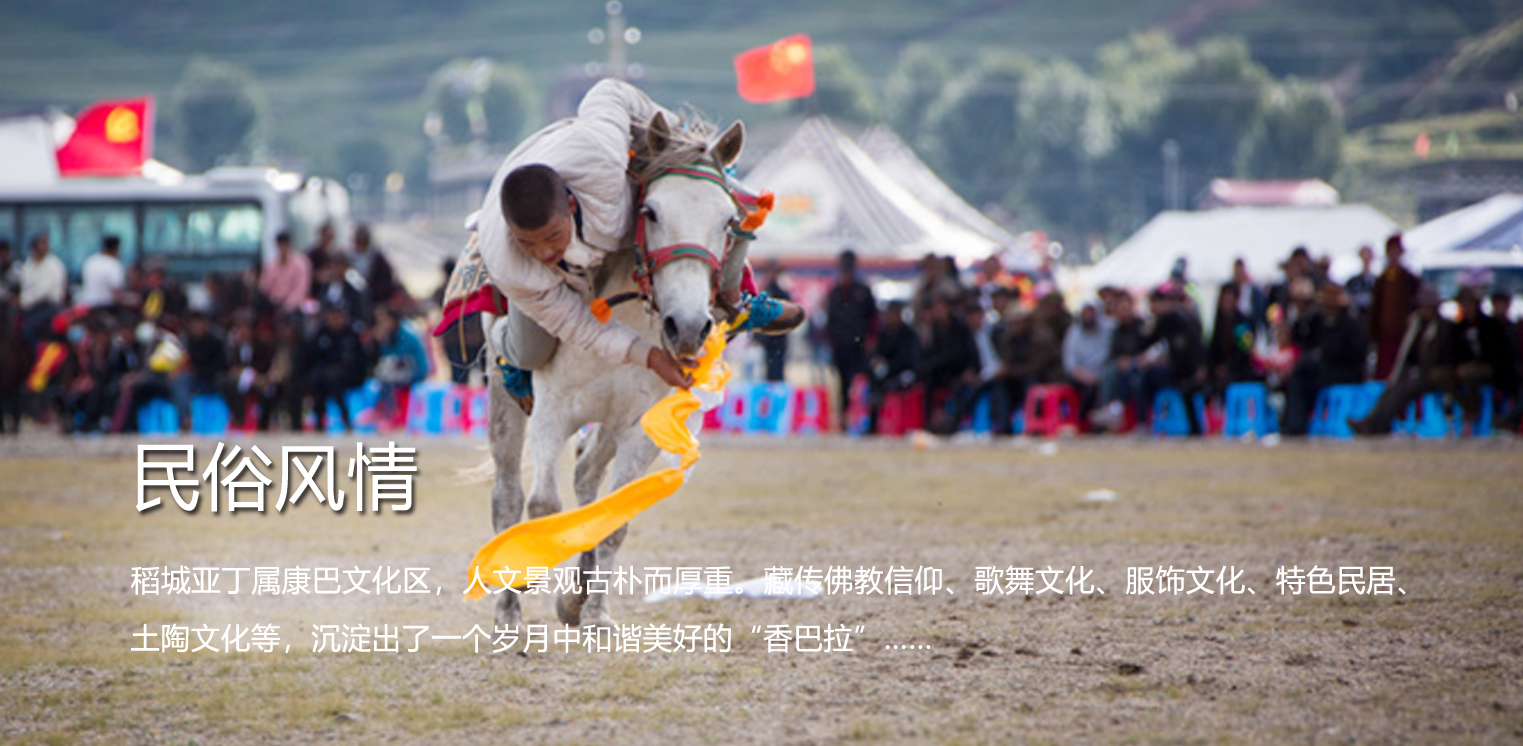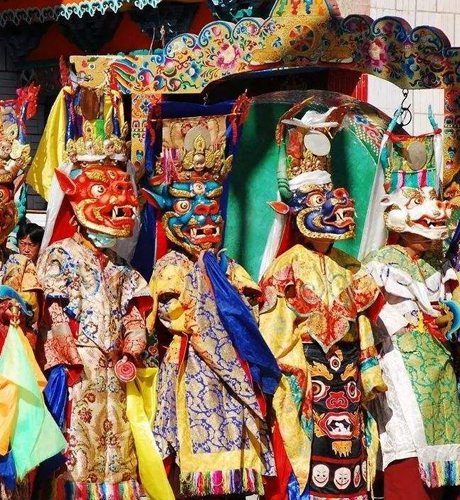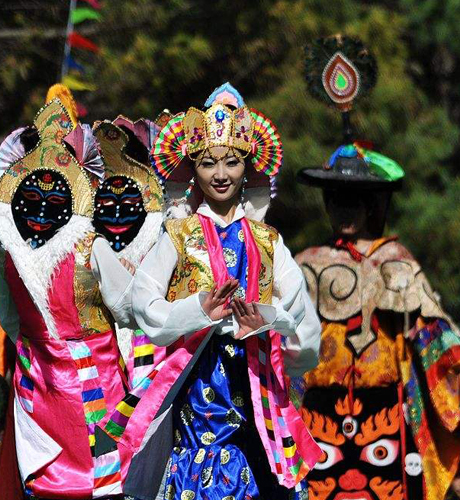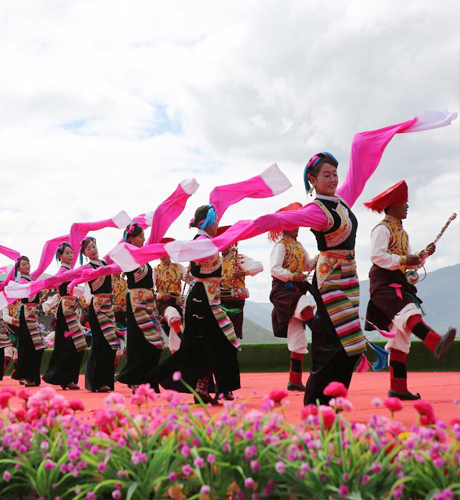Tibetan Buddhist culture
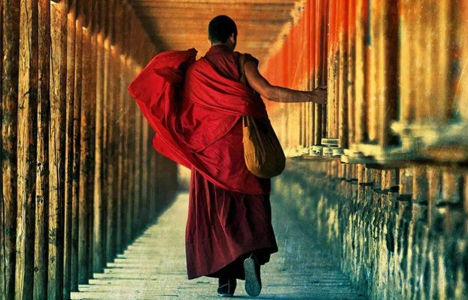

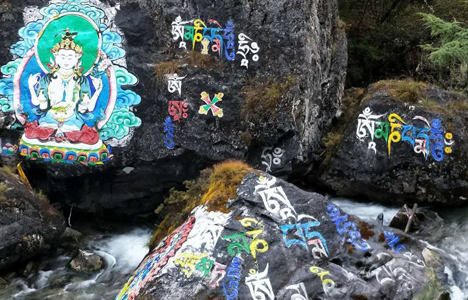
In Daocheng Yading area, Tibetans believe in Tibetan Buddhism. Tibetan Buddhism, also known as Tibetan Buddhism or Lamaism, refers to the branch of Buddhism introduced into Tibet in China and belongs to Mahayana Buddhism. Its origin can be traced back to more than 1800 years ago.
In addition to the original Bon religion, there are several schools of Tibetan Buddhism, such as Ningma school (red religion), Gelu school (yellow Religion), Kaju school (Bai Religion), Kadang school, Sakya school (Huajiao), etc.
Today, Tibetan people still maintain many unique ways of praying for blessings in Tibetan Buddhism: turning the sacred mountain, worshiping the God lake, scattering the wind horse flag, hanging colorful Sutra flags, carving stone scriptures, placing manidui, making divination, offering DOMA plates, butter flowers, and using the scripture turning tube.
Tibetan song and dance culture
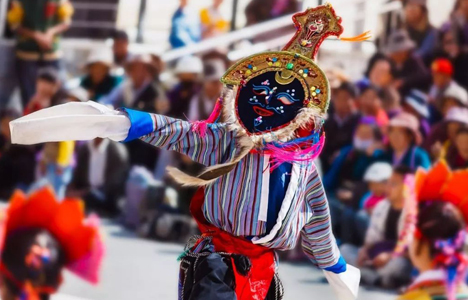
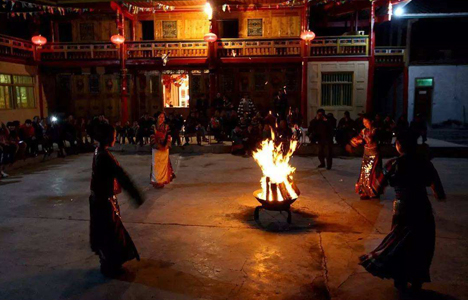
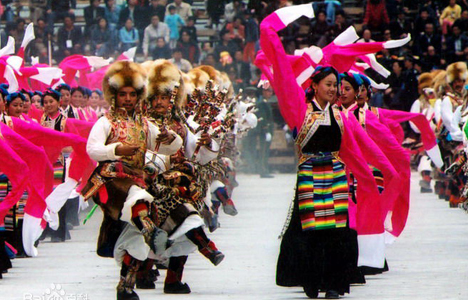
The Tibetan name of Tibetan Opera is "ajilam", which means "fairy sisters". Tibetan opera originated from Tibetan religious art in the 8th century. In the 17th century, it was separated from the religious rites of temples, and gradually formed a life-oriented performance with singing as the main form, singing, chanting, dancing, table, white and skill. On May 20, 2006, Tibetan opera was approved by the State Council to be included in the first batch of national intangible cultural heritage list.
Guozhuang dance, also known as "Guozhuo", "Gezhuang" and "Zhuo", means circle singing and dancing in Tibetan language. It is one of the three major Tibetan folk dances. It is also a primitive form of dance. With the development of Tibetan production and life, Guozhuang dance is gradually improved and enriched. As one of the folk dances, it has self entertainment and strong skills. On May 20, 2006, Guozhuang dance was approved by the State Council to be included in the first batch of national intangible cultural heritage list.
Xianzi dance is an indispensable music and dance in Tibetan people's life. During festivals, weddings and gatherings, people gather together to form a circle when dancing, and lead the dancers to sing and dance with the accompaniment of string (a kind of Tibetan stringed instrument). The rest of them gather in the circle, sometimes spread out, and swing their long sleeves with their hands, which makes them graceful. On May 20, 2006, Xianzi dance was approved by the State Council to be included in the first batch of national intangible cultural heritage list.
Tibetan characteristics
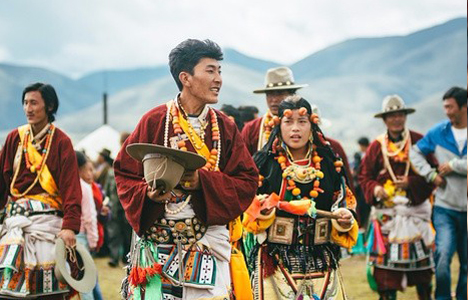
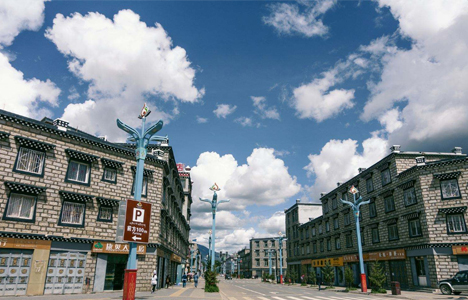

Tibetan style clothing is unique. Both men's and women's Tibetan robes are full breasted clothes. Men's black and white Tibetan robes are made of black and white silk. The collar, cuff, front and bottom edge are inlaid with colored silk. Most of the women's Tibetan robes are made of silk, wool and woolen cloth. In summer and autumn, they wear no sleeves with colorful shirts such as red and green. Women's Tibetan robes in winter usually have sleeves. Red, snow green and other Satin belts are tied around the waist. Tibetan women like to wear aprons most. Apron, which is called "bangdian" in Tibetan, is a special symbol of Tibetan women's Tibetan clothing. The apron has unique weaving method, precise knitting, elegant appearance and bright colors. At the same time, the Tibetan robe itself is a kind of simple and elegant decoration, which can be used as stage clothing.
The Tibetan style houses in Daocheng are very appealing in terms of architectural technology and artistic effect. The villages scattered in deep valleys, jungles and mountains are another scenic spot of Daocheng. The structure and layout of these dwellings, which are close to the mountains or near the water, change orderly with the mountain. Whether it is a stone storehouse, a black tent or a simple cowshed, all embody the beauty of harmony with nature. The complex geographical and geological environment of Daocheng determines the different materials and styles of residential buildings, showing the ingenuity of the builders based on local materials. The accessory decoration of the houses reflects the belief and tradition of the owners and develops a unique architectural style.
ASI earthenware is a kind of black pottery ware with strong national characteristics, rich cultural connotation, strong practicability and ornamental value. It is not only a national "intangible cultural heritage", a unique Tibetan handicraft product, but also one of the "four wonders" of Daocheng Yading. There is a very long red soil rock stratum in Chitu township of Daocheng County. This laterite has special composition, alumina and trace elements. It has strong viscosity and good air permeability. It is an excellent raw material for making pottery. People living in the nearby village of Axi have used this clay to make pottery since ancient times. After thousands of years of development and inheritance, a set of perfect and special black pottery firing techniques have been formed in Axi, and a number of skilled craftsmen have been handed down from generation to generation.

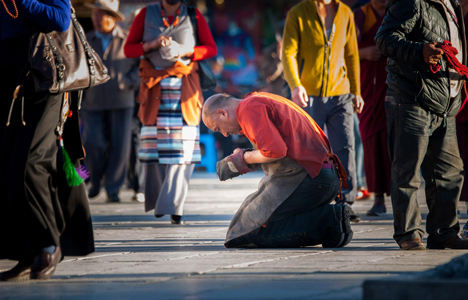
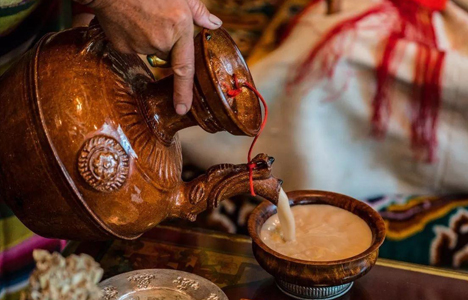
Offering hada is the most common etiquette of Daocheng people. It is often used in welcoming, presenting, worshiping gods and daily communication to show respect and congratulations.
Kowtow is mainly used in temples. Religious believers show their loyalty and piety by kowtowing when they go to the temple to make pilgrimages and visit the living Buddha.
The etiquette of toast and tea is often seen in the reception of relatives and friends by Tibetan people in Daocheng. Most of the simple Tibetans are warm, sincere and hospitable.
traditional festival
© 2020 甘孜州稻城亚丁景区管理局
蜀ICP备17010193号-1 | 技术支持
[云竹软件&智慧旅游]

